Related Research Articles

Dungeons & Dragons is a fantasy tabletop role-playing game (RPG) originally designed by Gary Gygax and Dave Arneson. The game was first published in 1974 by Tactical Studies Rules, Inc. (TSR). It has been published by Wizards of the Coast since 1997. The game was derived from miniature wargames, with a variation of the 1971 game Chainmail serving as the initial rule system. D&D's publication is commonly recognized as the beginning of modern role-playing games and the role-playing game industry, and also deeply influenced video games, especially the role-playing video game genre.

Ernest Gary Gygax was an American game designer and author best known for co-creating the pioneering role-playing game Dungeons & Dragons (D&D) with Dave Arneson.

TSR, Inc. was an American game publishing company, best known as the original publisher of Dungeons & Dragons (D&D). Its earliest incarnation, Tactical Studies Rules, was founded in October 1973 by Gary Gygax and Don Kaye. Gygax had been unable to find a publisher for D&D, a new type of game he and Dave Arneson were co-developing, so founded the new company with Kaye to self-publish their products. Needing financing to bring their new game to market, Gygax and Kaye brought in Brian Blume in December as an equal partner. Dungeons & Dragons is generally considered the first tabletop role-playing game (TTRPG), and established the genre. When Kaye died suddenly in 1975, the Tactical Studies Rules partnership restructured into TSR Hobbies, Inc. and accepted investment from Blume's father Melvin. With the popular D&D as its main product, TSR Hobbies became a major force in the games industry by the late 1970s. Melvin Blume eventually transferred his shares to his other son Kevin, making the two Blume brothers the largest shareholders in TSR Hobbies.
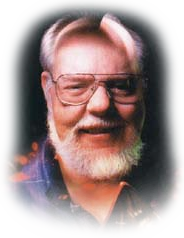
David Lance Arneson was an American game designer best known for co-developing the first published role-playing game (RPG), Dungeons & Dragons, with Gary Gygax, in the early 1970s. Arneson's early work was fundamental to the development of the genre, developing the concept of the RPG using devices now considered to be archetypical, such as adventuring in "dungeons" and using a neutral judge who doubles as the voice and consciousness of all characters aside from the player characters to develop the storyline.

Miniature wargaming is a form of wargaming in which military units are represented by miniature physical models on a model battlefield. The use of physical models to represent military units is in contrast to other tabletop wargames that use abstract pieces such as counters or blocks, or computer wargames which use virtual models. The primary benefit of using models is aesthetics, though in certain wargames the size and shape of the models can have practical consequences on how the match plays out.

In miniature wargaming, players enact simulated battles using scale models called miniature models, which can be anywhere from 2 to 54 mm in height, to represent warriors, vehicles, artillery, buildings, and terrain. These models are colloquially referred to as miniatures or minis.
An owlbear is a fictional creature originally created for the Dungeons & Dragons fantasy role-playing game. An owlbear is depicted as a cross between a bear and an owl, which "hugs" like a bear and attacks with its beak. Inspired by a plastic toy made in Hong Kong, Gary Gygax created the owlbear and introduced the creature to the game in the 1975 Greyhawk supplement; the creature has since appeared in every subsequent edition of the game. Owlbears, or similar beasts, also appear in several other fantasy role-playing games, video games and other media.
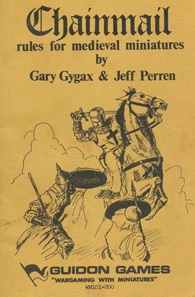
Chainmail is a medieval miniature wargame created by Gary Gygax and Jeff Perren. Gygax developed the core medieval system of the game by expanding on rules authored by his fellow Lake Geneva Tactical Studies Association (LGTSA) member Perren, a hobby-shop owner with whom he had become friendly. Guidon Games released the first edition of Chainmail in 1971.
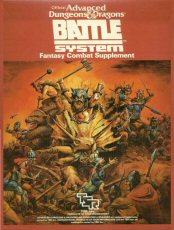
Battlesystem is a tabletop miniature wargame designed as a supplement for use with the Dungeons & Dragons role-playing game. The original Battlesystem was printed as a boxed set in 1985 for use with the first edition AD&D rules. For the second edition of AD&D, a new version of Battesystem was printed as a softcover book in 1989.
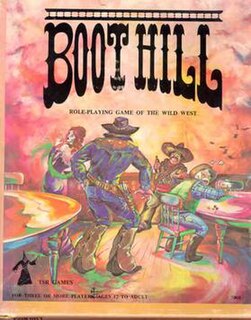
Boot Hill is a western-themed role-playing game designed by Brian Blume, Gary Gygax, and Don Kaye, and first published in 1975. Boot Hill was TSR's third role-playing game, appearing not long after Dungeons & Dragons and Empire of the Petal Throne, and taking its name from "Boot Hill", the popular Wild West term for "cemetery". Boot Hill was marketed to take advantage of America's love of the western genre. The game did feature some new game mechanics, such as the use of percentile dice, but its focus on gunfighting rather than role-playing, as well as the lethal nature of its combat system, limited its appeal. Boot Hill was issued in three editions over 15 years, but it never reached the same level of popularity as D&D and other fantasy-themed role-playing games.

Mordenkainen's Fantastic Adventure by Robert J. Kuntz and Gary Gygax is an adventure module for the Dungeons & Dragons role-playing game, published by TSR, Inc. in 1984. It originally bore the code "WG5" and was intended for use with the Advanced Dungeons & Dragons first edition rules. Because it is one of the WG modules, it is a module intended for the World of Greyhawk campaign setting. It was later updated in 2004 to the Third Edition Revised rules in Dungeon magazine, issue #112, as Maure Castle. There were subsequently two additional installments in issues #124 and #139.

Robert J. Kuntz is a game designer and author of role-playing game publications. He is best known for his contributions to various Dungeons & Dragons-related materials.
Lenard Lakofka was an American writer of material for the fantasy role-playing game Dungeons & Dragons. Although never a formal employee of TSR, the company that published Dungeons & Dragons, Lakofka was an influential voice in the development of the game. He was one of the playtesters of the game as it was being developed, an editor of early manuscripts, wrote a widely-read monthly D&D magazine column and two official D&D adventures, and had his home campaign setting of the Lendore Isles incorporated into Gary Gygax's World of Greyhawk Fantasy Game Setting.
Donald R. Kaye was the co-founder of Tactical Studies Rules (TSR), the game publishing company best known for their Dungeons & Dragons (D&D) role-playing game. He and TSR co-founder Gary Gygax had been friends since childhood, sharing an interest in miniature war games. In 1972, Kaye created Murlynd, one of the first D&D characters, and play-tested him in Gygax's Castle Greyhawk campaign. Kaye and Gygax were convinced that D&D and similar games were an excellent business opportunity, and together they founded Tactical Studies Rules in 1973. However, only two years later, just as sales of D&D started to rise, Kaye unexpectedly died of a heart attack at age 36.
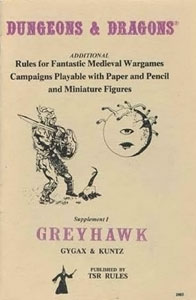
Greyhawk is a supplementary rulebook written by Gary Gygax and Robert J. Kuntz for the original edition of the Dungeons & Dragons (D&D) fantasy role-playing game. It has been called "the first and most important supplement" to the original D&D rules. Although the name of the book was taken from the home campaign supervised by Gygax and Kuntz based on Gygax's imagined Castle Greyhawk and the lands surrounding it, Greyhawk did not give any details of the castle or the campaign world; instead, it explained the rules that Gygax and Kuntz used in their home campaign, and introduced a number of character classes, spells, concepts and monsters used in all subsequent editions of D&D.

Swords & Spells is a supplementary rulebook by Gary Gygax for the original edition of the Dungeons & Dragons fantasy role-playing game. Its product designation is TSR 2007.
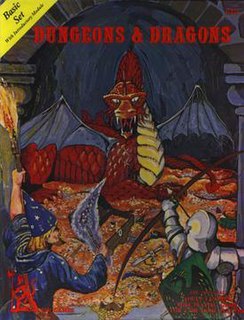
The Dungeons & Dragons Basic Set is a set of rulebooks for the Dungeons & Dragons (D&D) fantasy role-playing game. First published in 1977, it saw a handful of revisions and reprintings. The first edition was written by J. Eric Holmes based on Gary Gygax and Dave Arneson's original work. Later editions were edited by Tom Moldvay, Frank Mentzer, Troy Denning, and Doug Stewart.
Timothy James Kask is an American editor and writer in the role-playing game industry. Kask became interested in board games in his childhood, and later turned to miniatures wargames. While attending university after a stint in the US Navy, he was part of a group that playtested an early version of the new role-playing game Dungeons & Dragons (D&D) for game co-designer Gary Gygax. Gygax hired him as the first employee of TSR, Inc. in 1975. After editing some of TSR's early D&D publications, Kask became editor of The Strategic Review, which later became The Dragon, and then Dragon Magazine.
Theron O. Kuntz is a game designer who was an early associate of Gary Gygax and employee of TSR.

Adventures in Fantasy is a role-playing game published by Excalibre Games in 1979, designed by Dave Arneson and Richard Snider. The game is a fantasy system, similar to early Dungeons & Dragons (D&D), which Arneson co-created. It received mixed to negative reviews in game periodicals, including The Space Gamer, Ares, and Pegasus, and ultimately flopped. Arneson later bought the rights to Adventures in Fantasy and published a new edition in 1981 through his own company Adventure Games.
References
- 1 2 Baker, E. J., online and email interviews of subject, during November 1983
- ↑ Swan, Rick. The Complete Guide to Role-Playing Games (St Martin Press, 1990).
- ↑ Dragon (Issue 26 - Jun 1979), p. 26
- ↑ Dragon (Issue 29 - Sept 1979), p. 26
- ↑ online, http://www.lysator.liu.se/eamon/list.txt,
- ↑ online, Creature village
- ↑ private letters and emails between Gary Gygax and Rick Krebs, 1975-2008
- ↑ Foam Wars
- ↑ No Paint Armies
- ↑ online, Original D&D discussion